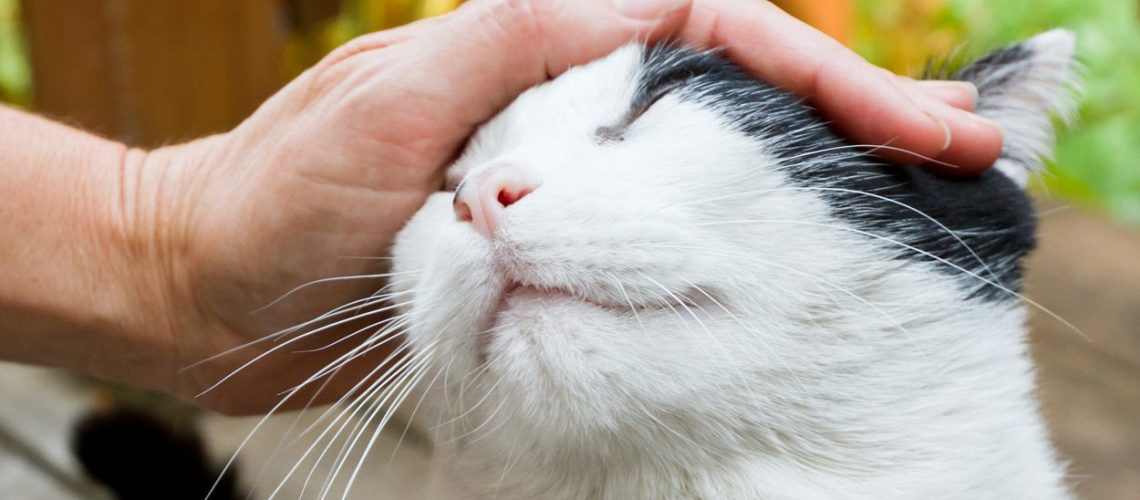Are you ready to embark on a thrilling journey of transformation? Imagine the satisfaction of witnessing a wild and untamed creature, once ruled by instinct and fear, become a beloved companion. In this captivating exploration, we will unravel the secrets behind taming a feral cat. Whether you're an aspiring pet owner or simply curious about the wonders of animal behavior, delving into this subject promises to be an eye-opening experience. Understanding how to tame a feral cat is not only essential for their well-being but also for our own fulfillment as compassionate humans. So, grab your curiosity and let's dive into the fascinating world of turning the wild to mild!
Key Takeaways:
- Feral cats can be tamed and transformed into loving pets with patience and proper techniques.
- Building trust is crucial when taming a feral cat, as they are naturally wary of humans.
- Slow and gradual socialization is necessary to help a feral cat adjust to domestic life.
- Positive reinforcement and rewards can encourage desired behaviors in a feral cat during the taming process.
- Seeking advice from experienced individuals or organizations can provide valuable guidance in successfully taming a feral cat.
"Wild to Mild: Taming a Feral Cat" - Book Summary
Understanding Feral Cats: A Description from the Book
Feral cats are domestic cats that have not been socialized with humans and have learned to survive in the wild. They are often born outside and have had little or no contact with people. In the book "Wild to Mild: Taming a Feral Cat," the author explains that feral cats can be found in both urban and rural areas, living in colonies or as solitary individuals.
These cats are different from stray cats, which are usually abandoned or lost pets that still retain some socialization with humans. Feral cats, on the other hand, may be fearful of humans and exhibit behaviors such as hissing, growling, or running away when approached. Understanding the nature of feral cats is crucial in order to successfully tame and domesticate them.
The Importance of Taming Feral Cats: Why it Matters
Taming feral cats is important for several reasons. Firstly, it improves their welfare by providing them with a safe and comfortable life indoors. Outdoor life can be dangerous for feral cats due to factors like harsh weather conditions, lack of food sources, and risks posed by predators.
Secondly, taming feral cats helps control their population. Feral cat colonies can quickly grow if left unmanaged, leading to overpopulation and increased competition for resources. By taming these cats and finding them loving homes through adoption programs, we can prevent further breeding and reduce the number of homeless animals.
Challenges in Taming Feral Cats: What to Expect
Taming feral cats can be a challenging process that requires patience and understanding. The book highlights some common challenges faced by individuals trying to tame feral cats:
- Fear and mistrust: Feral cats may have had negative experiences with humans, making them fearful and wary of human interaction.
- Limited socialization skills: Feral cats have not been exposed to typical domestic environments and may lack the social skills necessary for living with humans.
- Resistance to confinement: Feral cats are used to their freedom and may resist being confined indoors, leading to escape attempts or stress-related behaviors.
Despite these challenges, the book provides practical advice and techniques for gradually gaining a feral cat's trust and helping them adapt to a domesticated lifestyle.
Building Trust with a Feral Cat: Tips from the Author
The author shares valuable tips on building trust with feral cats:
- Start slow: Allow the cat to approach you at their own pace. Avoid sudden movements or loud noises that could scare them away.
- Provide food and water: Leave out small amounts of food and fresh water near the cat's hiding spot. This helps create positive associations with your presence.
- Use positive reinforcement: Reward the cat with treats or praise when they show signs of trust, such as approaching you or allowing gentle petting.
- Create a safe space: Set up a cozy area indoors where the cat can retreat to feel secure. Provide hiding spots, comfortable bedding, and toys to help them adjust.
Training Techniques for Domesticating a Feral Cat: Expert Advice
The book offers expert advice on training techniques that can help in domesticating feral cats:
- Clicker training: Using a clicker, a small handheld device that makes a distinct sound, can help reinforce positive behaviors and assist in teaching basic commands.
- Desensitization: Gradually exposing the cat to various stimuli, such as different sounds or gentle handling, can help them become more comfortable and less fearful.
- Litter box training: Teaching feral cats to use a litter box is an essential step in their domestication. The book provides guidance on how to introduce them to the litter box and encourage proper usage.
Real-Life Success Stories: Taming Feral Cats that Worked
The book shares inspiring real-life success stories of people who have successfully tamed feral cats:
- Maggie's transformation: Maggie was a feral cat who initially hid from humans but gradually learned to trust her caregiver. With time and patience, she became a loving companion who enjoyed indoor living.
- Max's journey: Max was a feral kitten found abandoned in the wild. Through consistent socialization efforts and positive reinforcement, he grew into a friendly and affectionate pet.
These success stories serve as proof that with dedication and understanding, even the most fearful feral cats can be transformed into beloved pets.
Understanding Feral Cats: A Description from the Book
Feral cats are domestic cats that have reverted to a wild state. They are born and raised without human contact, living independently outdoors. Unlike stray cats, feral cats are not socialized to humans and often exhibit fearful or aggressive behavior when approached. These cats form colonies in urban, suburban, and rural areas, surviving by scavenging for food and finding shelter in abandoned buildings or outdoor spaces.
Living as feral cats can be tough. They face various challenges such as finding enough food, avoiding predators, and coping with harsh weather conditions. Due to their elusive nature and aversion to human interaction, feral cats are often misunderstood and neglected. However, understanding their unique circumstances is crucial for implementing effective strategies to improve their welfare.
The Importance of Taming Feral Cats: Why it Matters
Taming feral cats is essential for several reasons. Firstly, it helps improve their quality of life by providing them with necessary veterinary care, proper nutrition, and safe shelter. Domesticating feral cats also reduces the risk of disease transmission among cat populations since vaccinated and sterilized cats are less likely to spread illnesses.
Furthermore, taming feral cats contributes to the overall well-being of communities. By reducing the number of feral cat colonies through successful domestication efforts, issues like noise disturbances caused by mating behaviors or territorial disputes can be minimized. Additionally, tamed feral cats can become loving companions for individuals or families willing to provide them with a forever home.
Challenges in Taming Feral Cats: What to Expect
Taming feral cats can be a challenging process due to their inherent fear of humans and lack of socialization. It requires patience, time, and a gentle approach. One of the main challenges is gaining their trust, as feral cats may initially exhibit defensive behaviors such as hissing, scratching, or running away. It is crucial to respect their boundaries and allow them to set the pace for interaction.
Another challenge is overcoming their natural instincts. Feral cats are accustomed to a life of independence and self-sufficiency, so adjusting to a domesticated environment can be overwhelming for them. They may struggle with using litter boxes, accepting confinement indoors, or interacting with other pets. Providing a calm and secure environment while gradually introducing them to new experiences can help overcome these challenges.
Building Trust with a Feral Cat: Tips from the Author
Building trust with a feral cat requires patience and understanding. Here are some tips from experienced individuals:
1. Establishing a Safe Space:
Create a designated area where the feral cat feels secure, providing hiding spots like cardboard boxes or blankets.
2. Offering Food and Water:
Place food and water near the safe space regularly, allowing the cat to associate your presence with positive experiences.
3. Gradual Approach:
Avoid sudden movements or loud noises that may startle the cat. Slowly approach while speaking softly in a calm tone.
Training Techniques for Domesticating a Feral Cat: Expert Advice
Different training techniques can aid in domesticating feral cats effectively. Experts recommend:
1. Clicker Training:
Using clicker training methods that reward desired behaviors with treats can help establish positive associations and encourage learning.
2. Desensitization:
Gently exposing feral cats to various stimuli they may encounter in a domestic setting, such as household sounds or handling, can help them become more comfortable and less fearful.
3. Play Therapy:
Engaging feral cats in interactive play sessions using toys can help build their confidence and establish trust with humans.
Real-Life Success Stories: Taming Feral Cats that Worked
Many heartwarming success stories demonstrate the possibility of taming feral cats. One such story involves a dedicated individual named Sarah who patiently worked with a feral cat named Max. Through consistent feeding, gentle interactions, and providing a safe space, Max gradually began to trust Sarah. Eventually, he allowed her to pet him and even started purring during their bonding sessions. Today, Max happily resides indoors as a beloved companion.
This inspiring tale showcases the transformative power of patience, compassion, and understanding when it comes to taming feral cats. It reminds us that with time and effort, these once-wild creatures can become loving companions capable of forming deep connections with humans.
In conclusion, taming a feral cat requires patience, understanding, and love. With time and effort, a feral cat can transform from wild to mild, becoming a loving and loyal companion.
What is the fastest way to tame a feral cat?
Take your time and proceed slowly when trying to tame a feral cat. Let the cat guide the process and establish trust gradually. Begin by offering food from a safe distance and gradually approach the cat. If the cat appears comfortable, you can try offering treats directly from your hand.
Can you ever fully tame a feral cat?
These animals can be considered to be essentially wild. Adult stray cats that used to have owners, or feral cats that are generally calm, may become tame with patience. However, if a feral kitten is captured at a young age, it can often be easily tamed.
How long does it take for a feral cat to tame?
The process of socializing and taming kittens can vary in length, typically taking anywhere from 2 to 6 weeks. In some cases, particularly with very shy kittens, it may take even longer. Factors such as age and individual temperament can greatly affect the time it takes for a kitten to become comfortable and tame.
Will a feral cat ever become friendly?
The classification of cats as feral or friendly is based solely on their behavior, and it is possible for some cats to change from feral to friendly over time. If this happens, it is a positive outcome. However, it is important to allow the socialization of feral adult cats to happen naturally while they are living outside and interacting with humans on their own terms.
Can you tame a 2 year old feral cat?
There is a possibility of domesticating a feral kitten, although it is generally not advised to tame a feral cat and it is usually not possible to tame an adult cat.
How do you bond with a feral cat?
Feeding a stray cat is the quickest way to earn their trust and affection. Stray cats are often hungry, so providing them with food and water is the first step. Once they recognize you as a reliable source of sustenance, they will visit you regularly. In some cases, this alone is enough to establish a bond with the cat, especially if they are already friendly.

















